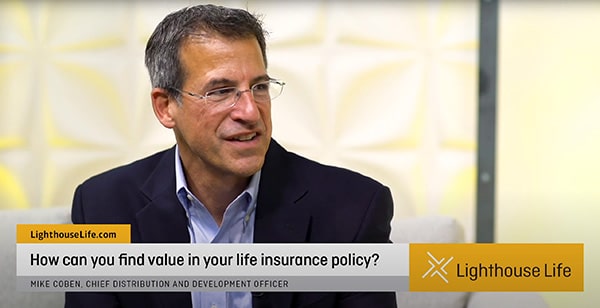30-second summary
As an advisor, you may have heard a prospect say, “I don’t know why they call it life insurance. It doesn’t do anybody any good until I’m dead, and I’ll never see a nickel of it.” This can be a difficult objection to overcome.
The message you’re trying to impart is, “Buying a life insurance policy is a solid financial decision. You’re committing to pay for something that will eventually make an incredible difference in someone else’s life. But your life insurance policy can also pay you cash benefits when you’re alive.”
This article will explain how your client can receive cash benefits from their life insurance policy’s death benefit while they’re alive. It’s called an accelerated death benefit, and there’s a good chance that your clients’ life insurance policies have this feature.
If you would like to learn more, contact us today to find out if your client may qualify for cash benefits.

When clients buy a life insurance policy, many times they buy it primarily for someone else’s benefit. Their ultimate goal is to leave behind a death benefit to the people they care about so they continue to have financial security.
However, life has a way of bringing unexpected events our way. While alive, they may need cash due to a change in their health status. This money may be necessary for such costs as:
- Medical expenses
- Hospice care
- Nursing home costs
- Private nursing care
- Home health care
One of the sources of funds to cover expenses like these is through a feature that many term life and permanent life insurance policies have: an accelerated death benefit rider.
What Is an accelerated death benefit?
An accelerated death benefit (ADB) is a common feature of most life insurance policies and is often available at no additional cost to the policyowner. The ADB allows the policyowner to receive a portion of the policy’s death benefit while they’re still living.
To receive a lump-sum cash payment, the insured generally must either:
- Be diagnosed by a medical doctor as having a terminal illness and have under 12 to 24 months to live (depending on the insurer) or
- Be diagnosed with a chronic condition and be unable to perform two of the six activities of daily living: bathing, continence, toileting, eating, dressing, and transferring.
They can also typically receive an accelerated death benefit if they have a permanent, severe cognitive impairment (i.e., Alzheimer’s disease, dementia) and need substantial supervision.
With many insurers, they’ll no longer be responsible for premium payments once they start receiving an ADB payment, and, in most cases, they won’t have to pay taxes on the payout.
How is an accelerated death benefit paid?
Payment of an accelerated death benefit will vary by company.
In some cases, a lump sum payment is made. This is a flat percentage of the death benefit and can range from 25% to 95%, depending on the policy and the insurer.
Some life insurance companies limit the percentage of the death benefit that can be accessed for a chronic illness. For example, an insurer might limit the accelerated payout to 25% of the death benefit per year for up to four years.
Other insurers may use their own formula based on your client’s life expectancy when they request the ADB to be paid, making it difficult to know the specific amount they’ll receive until they need it.
Some life insurers will also charge an administrative or service fee to access the accelerated death benefit.
How are beneficiaries affected by an accelerated death benefit payout?
The death benefit eventually paid to the policy beneficiaries will be reduced by the amount paid as an accelerated death benefit.
For example, if the policy’s death benefit is $500,000 and your client receives a $125,000 accelerated death benefit payment, the policy’s beneficiaries will receive $375,000 when the client passes.
Other options for life insurance policyowners
If your client’s life insurance policy does not have an accelerated death benefit feature, or if it does, but they are unable to access it based on their diagnosis, they may be able to withdraw or borrow money from their policy’s cash value.
The drawback to this option is that they will still be responsible for paying the premium, which they may not be able to easily do when they are ill.
Another option to the accelerated death benefit is a viatical settlement or life settlement. With a viatical settlement or life settlement, your client sells their life insurance policy to a third party for a lump sum greater than the policy’s cash value but less than the death benefit amount.
With a viatical settlement or life settlement, once the policy sale is completed, your client will no longer be responsible for premium payments. Keep in mind, though, that their beneficiaries will no longer receive the death benefit.
Explore a viatical settlement with Lighthouse Life
If you would like to learn more about viatical settlements and how they can benefit your clients, contact us to find out if they may qualify. One of our trained, experienced life and viatical settlement experts will reach out to learn more about their unique needs and help them receive the most cash for their life insurance policy as quickly as possible.

